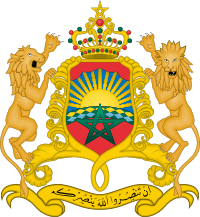Television in Morocco
Television in Morocco. Terrestrial television viewing was estimated at 20% of total television households in 2011. IPTV is offered by Maroc Telecom. Digital terrestrial television is gradually spreading, with 41 national and foreign channels. The national broadcaster SNRT aims to complete digital switchover by 2015.[1]
Morocco has nine domestic free-to-air channels: seven government owned, one privately owned, and one of mixed ownership. 2M TV started out as the first private terrestrial channel in Morocco, in 1989, however it became a mixed ownership channel as 70% of its capital was bought by the government. It is by far the most watched channel in Morocco, cited by 84% of TV viewers. Medi1 TV (formerly Medi 1 Sat) is the privately owned channel, although 50% of its shares are owned by the public sector. The other seven channels are all government-owned.[1]
beIN SPORTS is the most popular pay-TV bouquet in Morocco, accounting for around 65% of the local pay-TV market.[1]
History
Morocco was a pioneer in the Television field in the Middle East. In the 1950s, the country had a first experience undertaken by the French company "TELMA" who saw in the European community in Morocco a potential audience. In 1951, the authorization of exploitation and diffusion was ceded to "TELMA" which did not begin to transmit until February 1954. It was an experience that would only last a few months, the station ceasing its activity soon after covering the return of King Mohammed V to Morocco on November 16, 1955. The company had to stop, not because of a simple commercial failure but because of the political events generated by the nationalist movement that shook the country, and deprived the company of advertising resources, local advertisers gradually withdrawing their contracts for fear of possible reprisals, as reported in an interview Abdellah Chakroun, former Director of Moroccan Television, author of the book "Reflections on the audiovisual and theatre".[2]
According to the technical guide "World Radio Television Handbook" of the time 2, the "TELMA" emitted to standard 819 French lines (Standard E) since its studios of Casablanca settled in the district of Ain Chock. It had two transmitters, one in Casablanca on the F12 channel, the other in Rabat on the F8 channel (connected by radio link to the previous one) and planned to open two more in 1955 in Fes and Meknes. The main shareholders, the management and technical staff were mainly French, notably Jean Luc in the Programs Department, who had previously held this position on RTF Television. The programs were mainly of French origin, with magazines and varieties "kinescopés" (recorded on film), serials and films.
In his book "Reflections on the Audiovisual and Theater" , the former director of Moroccan television Abdellah Chakroun also said that in 1960, the Moroccan government bought the "TELMA" for the symbolic sum of 100 million francs, he then called on Italian public television RAI to help him set up his own public channel, which was set up at Mohammed V Theater in Rabat. The technical standard adopted was the 625 "European" lines (Standard B) with specific channels in Morocco ("M4 to M10 channels in band III.) Like" TELMA ", it initially had only two transmitters, in Rabat (M10 channel) and Casablanca (M7 channel).[3]
The Moroccan public channel began on the day of the celebration of the first year of Hassan II's reign on March 3, 1962. Colour ( SÉCAM IIIb process ) was introduced in 1972.
The status of the TVM has moved successively from the regime of legal capacity and financial autonomy to that of the public institution, and then to its integration into the central administration of the Ministry of Communication, with a subsidiary budget.
In terms of resources, the TVM ensures the balance of its budget through a grant from the State, in addition to a contribution-based contribution indexed to the energy consumption of households, the surplus of revenues of the Autonomous Advertising Service (SAP), as well as miscellaneous and accidental revenues resulting from the income from its services.
List of channels
- Al Aoula : SD and HD
- 2M TV : SD
- Arryadia : SD and HD
- Arrabia : SD and HD
- Al Maghribia : SD and HD
- Assadissa : SD and HD
- Aflam TV (TNT Only) : SD and HD
- Tamazight TV : SD and HD
- Medi 1 TV (Africa / Arabic / Maghreb) : SD and HD
- Laayoune TV : SD and HD
- Télé Maroc : SD
- Chada TV : SD
- Wissam TV : SD
- Al Ons TV : HQ
See also
- Al Aoula
- 2M TV
References
- "Arab Media Outlook 2011-2015" (PDF). 2012. pp. 149–151.
- http://aujourdhui.ma/culture/letat-garde-loeil-sur-la-television-44831. Missing or empty
|title=(help) - http://archives.television.free.fr/TV/Afrique/Maroc/Telma/WRTH_Edition_1956_Maroc_TELMA.jpg
